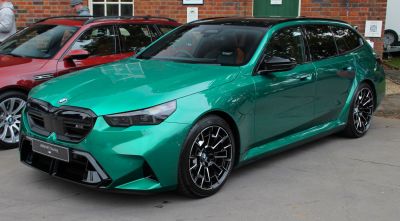 1996 Mercury Sable Station Wagon III Dimensions, Size & Specs
1996 Mercury Sable Station Wagon III Dimensions, Size & SpecsMeasurements of the 1996 Mercury Sable Station Wagon III, engineered for optimal performance and comfort
| Dimensions | |
|---|---|
| Length: | 5060 mm199.2 in16.6 ft |
| Width: | 1850-1900 mm72.8-74.8 in6.1-6.2 ft |
| Height: | 1460 mm57.5 in4.8 ft |
| Trunk Capacity: | 1290 liter45.6 cu ft |
| Trunk Capacity (Max): | 2290 liter80.9 cu ft |
| Weight Specifications | |
| Curb Weight: | 1605-1610 kg3538-3549 lbs |
| Tire Specifications | |
| Tire Sizes: |
|
The 1996 Mercury Sable Station Wagon III marks the third generation of this versatile and spacious station wagon, produced from 1995 to 1999. Renowned for its blend of practicality, comfort, and mid-90s styling, this model offers ample interior space and flexible cargo solutions, making it ideal for families and those needing significant luggage capacity.
In terms of size, the Mercury Sable Station Wagon III measures a substantial 5060 mm (199.2 inches) in length, providing considerable room inside while maintaining manageable exterior dimensions. Its width varies between 1850 mm to 1900 mm (72.8 to 74.8 inches), depending on trim and tire options, contributing to a stable stance on the road. The vehicle stands at 1460 mm (57.5 inches) in height, striking a balance between aerodynamics and interior headroom.
When it comes to weight, this station wagon weighs in between 1605 kg and 1610 kg (3540 to 3550 lbs), offering a sturdy build that supports both comfort and safety. Its tire sizes range from 205/65 R15 to 215/60 R16, tailoring ride quality and handling to different driver preferences.
The cargo capacity of the Sable Station Wagon III is especially noteworthy. With all seats in place, it offers 1290 liters (45.5 cubic feet) of luggage space, sufficient for everyday needs like groceries or luggage for a trip. Folding down the rear seats expands the capacity dramatically to 2290 liters (80.9 cubic feet), allowing for large or bulky items to be transported with ease. This flexibility makes the vehicle not only a comfortable family car but also a practical choice for those requiring versatile cargo solutions.
Overall, the 1996 Mercury Sable Station Wagon III encapsulates the quintessential mid-size station wagon formula of the 1990s, prioritizing space, usability, and comfort. Its spacious dimensions, practical seating, and significant cargo volume make it a competitive option in its segment during its production years.
Discover the standout features that make the 1996 Mercury Sable Station Wagon III a leader in its class
Have a question? Please check our knowledgebase first.
The 1996 Mercury Sable Station Wagon III measures approximately 5060 mm (199.2 inches) in length, making it a substantial family wagon. It has a width ranging from 1850 mm to 1900 mm (72.8 to 74.8 inches), accommodating different trim or tire fitments. The height stands at 1460 mm (57.5 inches), which offers a balanced profile between aerodynamics and interior space. These dimensions place the Sable Station Wagon III comfortably within the mid-to-large size station wagon category, optimizing both passenger comfort and cargo space.
The 1996 Mercury Sable Station Wagon III is larger than many modern mid-size wagons, especially considering its length of 5060 mm (199.2 inches) and cargo capacity. While modern wagons have generally trended towards more compact designs focused on efficiency and agility, the Sable’s dimensions allow for more spacious interiors and larger luggage space. Its cargo capacity of 1290 liters (with seats upright) and an impressive 2290 liters (with rear seats folded) surpasses many contemporary competitors, which often prioritize style and fuel economy over sheer size.
The Mercury Sable Station Wagon III from 1996 offers a generous luggage capacity of 2290 liters (around 80.9 cubic feet) when the rear seats are folded down. This expansive cargo area makes it very practical for hauling large items, luggage, or equipment, which is ideal for family trips or activities requiring significant storage space. The standard cargo capacity with rear seats upright is 1290 liters (about 45.5 cubic feet), which already surpasses many station wagons of its era.
The 1996 Mercury Sable Station Wagon III has a curb weight ranging between 1605 kg and 1610 kg (3540 to 3550 pounds). This moderate weight is typical of station wagons from the mid-1990s, balancing structural robustness with passenger comfort. The weight contributes to a stable ride and solid road presence, though it does slightly impact fuel economy compared to lighter vehicles. However, engines and transmissions of the era were designed to manage such weight optimally, so the driving experience remained competent with reasonable fuel consumption for the class.
Generally, yes, the 1996 Mercury Sable Station Wagon III fits into a standard residential garage. At 5060 mm (199.2 inches) long, it is slightly longer than many sedans but still within the range of typical garage depth dimensions, which usually start around 5400 mm (213 inches) or more. The width of 1850 to 1900 mm (72.8 to 74.8 inches) fits comfortably within a standard garage width, which is often at least 2600 mm (102 inches) per bay. The height of 1460 mm (57.5 inches) is well under typical garage door heights exceeding 2000 mm (78 inches). Therefore, parking this wagon in a standard garage should pose no issues.
The 1996 Mercury Sable Station Wagon III commonly comes equipped with either 205/65 R15 or 215/60 R16 tires. These tire sizes balance ride comfort and handling – larger rims with lower profile tires (215/60 R16) generally improve cornering and responsiveness but may provide a firmer ride. Meanwhile, the 205/65 R15 tires offer a softer ride quality due to higher sidewalls, which absorb bumps well. Both options maintain good stability for a family wagon and suit its typical usage for comfortable, long-distance travel.
Compared to its predecessor, the earlier Mercury Sable station wagons were generally shorter and had less cargo capacity. The third-generation Sable Station Wagon (1995-1999) extended its length to 5060 mm (199.2 inches) and expanded interior and luggage space substantially. This generation also featured more refined styling, improved safety features, and better interior appointments. Functionally, the wagon embraced a sleeker, more aerodynamic design that enhanced fuel efficiency and driving dynamics compared to the more boxy and traditional earlier models.
The Mercury Sable Station Wagon III shares a platform with the Ford Taurus Wagon but often has more upscale appointments. Dimensionally, both vehicles are quite similar; the Taurus Wagon typically measures slightly shorter, around 4980 mm (196 inches), compared to the Sable’s 5060 mm (199.2 inches). Width and height are also comparable. However, the Sable often boasts a more refined interior and exterior styling. The cargo capacity and overall space are competitive, making both suitable for families needing versatile and roomy wagons in the mid-1990s market.
While specific interior passenger dimensions for the 1996 Mercury Sable Station Wagon III aren’t detailed here, the vehicle’s overall large exterior dimensions translate to generous interior cabin space. Family-friendly features include spacious rear and front seating with adequate headroom and legroom owing to the 1460 mm (57.5 inches) height and station wagon roofline design. The large cargo area behind the rear seats and the option to fold these seats flat enhances the vehicle’s practicality. Combined with quality interior materials and comfort-focused appointments typical of Mercury vehicles, it delivers a comfortable ride for all occupants.
Absolutely, the 1996 Mercury Sable Station Wagon III is an excellent choice for families seeking spaciousness and versatility in a station wagon format. Its generous length of 5060 mm (199.2 inches), wide stance (1850-1900 mm / 72.8-74.8 inches), and significant cargo capacities (up to 2290 liters / 80.9 cubic feet with seats folded) make it highly practical for transporting passengers and luggage. The wagon styling maintains a manageable driving profile versus larger SUVs, with the added benefits of a more car-like ride and fuel efficiency typical of vehicles from its era.
Discover similar sized cars.

| Model Year: | 2025 |
|---|---|
| Length: | 5096 mm200.6 in |
| Width: | 1970 mm77.6 in |
| Height: | 1516 mm59.7 in |
